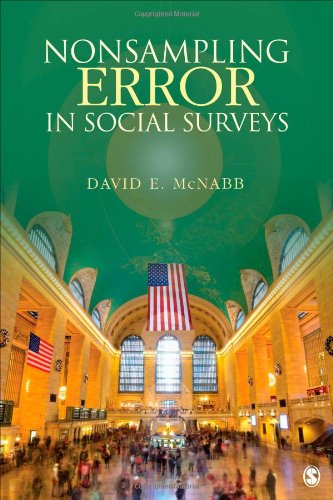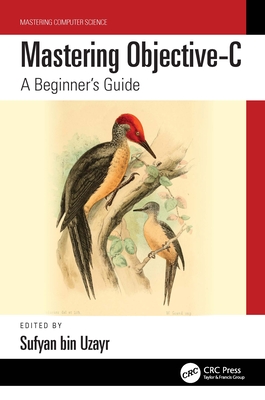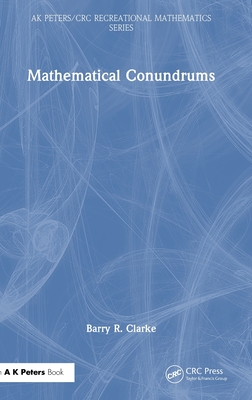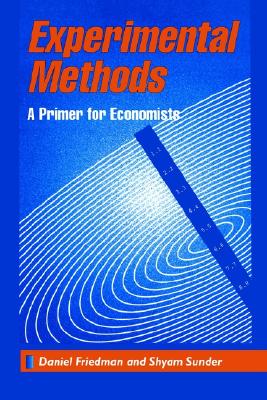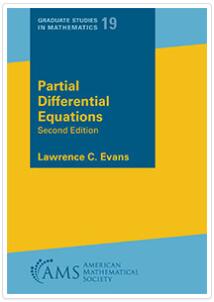图书简介
A welcome and much-needed addition to the literature on survey data quality in social research, Nonsampling Error in Social Surveys, by David E. McNabb, examines the most common sources of nonsampling error: frame error; measurement error; response error, nonresponse error, and interviewer error.
Chronological Table of Cases \\ Tables, Figures, and Boxes \\ Preface \\ PART I: The U.S. Constitution \\ An Introduction to the U.S. Constitution \\ The Road to the U.S. Constitution \\ Underlying Principles of the Constitution \\ Chpater 1: The Living Constitution \\ The Amendment Process \\ The Supreme Court and the Living Constitution \\ Readings \\ Chapter 2: Understanding the Supreme Court \\ Processing Supreme Court Cases \\ Supreme Court Decision Making: The Role of Law and Legal Methods \\ Supreme Court Decision Making: The Role of Politics \\ Conducting Research on the Supreme Court \\ Readings \\ PART II: Institutional Authority \\ Structuring the Federal System \\ Origins of the Separation of Powers/Checks and Balances System \\ Separation of Powers and the Constitution \\ Chapter 3: The Judiciary \\ Establishment of the Federal Judiciary \\ Judicial Review \\ Marbury v. Madison (1803) \\ Constraints on Judicial Power \\ Ex Parte McCardle (1869) \\ Readings \\ Chapter 4: The Legislature \\ Article I: Historical Overview \\ Members of Congress: Qualifications, Immunity, and Discipline \\ U.S. Term Limits v. Thornton (1995) \\ The Sources and Scope of Legislative Powers \\ McCulloch v. Maryland (1819) \\ United States v. Curtiss-Wright Export Corp. (1936) \\ Congress and the Separation of Powers \\ Mistretta v. United States (1989) \\ Immigration and Naturalization Service v. Chadha (1983) \\ Readings \\ Chapter 5: The Executive \\ Selection and Formal Powers \\ The Domestic Powers of the President \\ Clinton v. City of New York (1998) \\ United States v. Nixon (1974) \\ Clinton v. Jones (1997) \\ The President and Foreign Affairs \\ Korematsu v. United States (1944) \\ Youngstown Sheet & Tube Co. v. Sawyer (1952) \\ Hamdi v. Rumsfeld (2004) \\ Readings \\ PART III: Nation-State Relations \\ Allocating Government Power \\ The Framers and Federalism \\ The Allocation of Government Power \\ Chapter 6: Federalism: An Introduction \\ State Sovereignty and the Tenth Amendment \\ McCulloch v. Maryland (1819) \\ The Taney Court and the (Re)Emergence of States’ Rights \\ Dual Federalism and Laissez-Faire Economics \\ The (Re)Emergence of National Supremacy: Cooperative Federalism \\ Return of (a Milder Form of) Dual Federalism \\ Printz v. United States (1997) \\ The Eleventh Amendment \\ Readings \\ Chapter 7: The Commerce Power \\ Foundations of the Commerce Power \\ Gibbons v. Ogden (1824) \\ Attempts to Define the Commerce Power in the Wake of the Industrial Revolution \\ Hammer v. Dagenhart (1918) \\ The Supreme Court and the New Deal \\ A.L.A. Schechter Poultry Corp. v. United States (1935) \\ National Labor Relations Board v. Jones & Laughlin Steel Corporation (1937) \\ The Era of Expansive Commerce Clause Jurisprudence \\ United States v. Darby (1941) \\ Wicked v. Filburn (1942) \\ Heart of Atlanta Motel, Inc. v. United States (1964) \\ Limits on the Commerce Power: The Republican Court Era \\ Garcia v. San Antonio Metropolitan Transit Authority (1985) \\ United States v. Lopez (1995) \\ Gonzales v. Raich (2005) \\ National Federation of Independent Business v. Sebelius (2012) \\ Readings \\ Chapter 8: The Power to Tax and Spend \\ The Constitutional Power to Tax and Spend \\ Direct Taxes and the Power to Tax Income \\ Pollock v. Farmers Loan & Trust Co. (1895) \\ Intergovernmental Tax Immunity \\ Taxation as a Regulatory Power \\ Taxing and Spending for the General Welfare \\ South Dakota v. Dole (1987) \\ National Federation of Independent Business v. Sebelius (2012) \\ Reading \\ PART IV: Economic Liberties \\ Economic Liberties and Individual Rights \\ Chapter 9: The Contract Clause \\ The Framers and the Contract Clause \\ John Marshall and the Contract Clause \\ The Decline of the Contract Clause \\ Proprietors of Charles River Bridge v. Proprietors of Warren Bridge (1837) \\ Home Building and Loan Association v. Blaisdell (1934) \\ Modern Applications of the Contract Clause \\ Readings \\ Chapter 10: Economic Substantive Due Process \\ The Development of Substantive Due Process \\ The Roller-Coaster Ride of Substantive Due Process: 1898-1923 \\ Lochner v. New York (1905) \\ The Heyday of Substantive Due Process: 1923-1936 \\ Adkins v. Children’s Hospital (1923) \\ The Depression, the New Deal, and the Decline of Substantive Due Process \\ West Coast Hotel v. Parrish (1937) \\ Readings \\ Chapter 11: The Takings Clause \\ Protecting Private Property from Government Seizure \\ What Constitutes a Taking? \\ Penn Central Transportation Company v. City of New York (1978) \\ Lucas v. South Carolina Coastal Council (1992) \\ Public Use Requirement \\ Kelo v. City of New London (2005) \\ Readings \\ PART V: Civil Liberties \\ Approaching Civil Liberties \\ Chapter 12: Religion: Exercise and Establishment \\ Free Exercise of Religion \\ Sherbert v. Verner (1963) \\ Employment Division, Department of Human Resources of Oregon v. Smith (1990) \\ Religious Establishment \\ Everson v. Board of Education (1947) \\ School District of Abington Township v. Schempp; Murray v. Curlett (1963) \\ Lemon v. Kurtzman; Earley v. DiCenso (1971) \\ Zelman v. Simmons-Harris (2002) \\ Van Orden v. Perry (2005) \\ Readings \\ Chapter 13: Freedom of Speech, Assembly, and Association \\ The Development of Legal Standards: The Emergence of Law in Times of Crisis \\ Schenck v. United States (1919) \\ Contemporary Tests and Constitutional Guidelines \\ Content and Contexts \\ Texas v. Johnson (1989) \\ Chaplinsky v. New Hampshire (1942) \\ Morse v. Frederick (2007) \\ Snyder v. Phelps (2011) \\ West Virginia Board of Education v. Barnette (1943) \\ Boy Scouts of America v. Dale (2000) \\ Readings \\ Chapter 14: Freedom of the Press \\ Prior Restraint \\ Near v. Minnesota (1931) \\ The Media and Special Rights \\ Branzburg v. Hayes (1972) \\ The Boundaries of Free Press: Libel, Obscenity, and Emerging Areas of Government Concern \\ New York Times v. Sullivan (1964) \\ Miller v. California (1973) \\ Brown v. Entertainment Merchants Association (2011) \\ Regulating the Internet \\ Reno v. American Civil Liberties Union (1997) \\ Readings \\ Chapter 15: The Right to Keep and Bear Arms \\ Initial Interpretations \\ The Second Amendment Revisited \\ District of Columbia v. Heller (2008) \\ Heller and the States \\ Readings \\ Chapter 16: The Right to Privacy \\ The Right to Privacy: Foundations \\ Griswold v. Connecticut (1965) \\ Reproductive Freedom and the Right to Privacy \\ Roe v. Wade (1973) \\ Private Activities and the Application of Griswold \\ Lawrence v. Texas (2003) \\ Cruzan v. Director, Missouri Department of Health (1990) \\ Readings \\ PART VI: The Rights of the Criminally Accused \\ The Criminal Justice System and Constitutional Rights \\ Overview of the Criminal Justice System \\ Trends in Court Decision Making \\ Chapter 17: Investigations and Evidence \\ Searches and Seizures \\ United States v. Jones (2012) \\ Mapp v. Ohio (1961) \\ United States v. Leon (1984) \\ The Fifth Amendment and Self-Incrimination \\ Miranda v. Arizona (1966) \\ Readings \\ Chapter 18: Attorneys, Trials, and Punishments \\ The Right to Counsel \\ Gideon v. Wainwright (1963) \\ Fair Trials \\ Sentencing and the Eighth Amendment \\ Gregg v. Georgia (1976) \\ Atkins v. Virginia (2002) \\ Posttrial Stages \\ Readings \\ PART VII: Civil Rights \\ Civil Rights and the Constitution \\ The Fourteenth Amendment \\ The Fifteenth Amendment \\ Chapter 19: Discrimination \\ Racial Discrimination \\ Plessy v. Ferguson (1896) \\ Brown v. Board of Education of Topeka (1954) \\ Sex Discrimination \\ Reed v. Reed (1971) \\ Craig v. Boren (1976) \\ Economic Discrimination \\ San Antonio Independent School District v. Rodriguez (1973) \\ Discrimination Based on Sexual Orientation \\ Romer v. Evans (1996) \\ United States v. Windsor (2013) \\ Remedying the Effects of Discrimination: Affirmative Action \\ Grutter v. Bollinger (2003) \\ Readings \\ Chapter 20: Voting and Representation \\ Voting Rights \\ Shelby County, Alabama v. Holder (2013) \\ Contemporary Restrictions on the Right to Vote \\ Crawford v. Marion County Election Board (2008) \\ Election Campaign Regulation \\ Citizens United v. Federal Election Commission (2010) \\ Political Representation \\ Reynolds v. Sims (1964) \\ Miller v. Johnson (1995) \\ The 2000 Presidential Election \\ Bush v. Gore (2000) \\ Readings \\ Reference Material \\ Constitution of the United States \\ The Justices \\ Glossary \\ Online Case Archive List \\ Case Index \\ Subject Index
Trade Policy 买家须知
- 关于产品:
- ● 正版保障:本网站隶属于中国国际图书贸易集团公司,确保所有图书都是100%正版。
- ● 环保纸张:进口图书大多使用的都是环保轻型张,颜色偏黄,重量比较轻。
- ● 毛边版:即书翻页的地方,故意做成了参差不齐的样子,一般为精装版,更具收藏价值。
关于退换货:- 由于预订产品的特殊性,采购订单正式发订后,买方不得无故取消全部或部分产品的订购。
- 由于进口图书的特殊性,发生以下情况的,请直接拒收货物,由快递返回:
- ● 外包装破损/发错货/少发货/图书外观破损/图书配件不全(例如:光盘等)
并请在工作日通过电话400-008-1110联系我们。
- 签收后,如发生以下情况,请在签收后的5个工作日内联系客服办理退换货:
- ● 缺页/错页/错印/脱线
关于发货时间:- 一般情况下:
- ●【现货】 下单后48小时内由北京(库房)发出快递。
- ●【预订】【预售】下单后国外发货,到货时间预计5-8周左右,店铺默认中通快递,如需顺丰快递邮费到付。
- ● 需要开具发票的客户,发货时间可能在上述基础上再延后1-2个工作日(紧急发票需求,请联系010-68433105/3213);
- ● 如遇其他特殊原因,对发货时间有影响的,我们会第一时间在网站公告,敬请留意。
关于到货时间:- 由于进口图书入境入库后,都是委托第三方快递发货,所以我们只能保证在规定时间内发出,但无法为您保证确切的到货时间。
- ● 主要城市一般2-4天
- ● 偏远地区一般4-7天
关于接听咨询电话的时间:- 010-68433105/3213正常接听咨询电话的时间为:周一至周五上午8:30~下午5:00,周六、日及法定节假日休息,将无法接听来电,敬请谅解。
- 其它时间您也可以通过邮件联系我们:customer@readgo.cn,工作日会优先处理。
关于快递:- ● 已付款订单:主要由中通、宅急送负责派送,订单进度查询请拨打010-68433105/3213。
本书暂无推荐
本书暂无推荐
